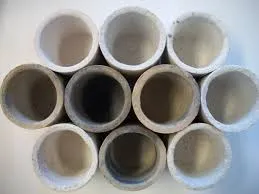Dec . 15, 2024 03:25 Back to list
cast ductile iron
Understanding Cast Ductile Iron Properties, Applications, and Advantages
Cast ductile iron, also known as ductile cast iron or nodular cast iron, has emerged as a vital material in modern engineering and manufacturing. This versatile material combines the benefits of cast iron with enhanced mechanical properties, making it suitable for various applications. This article delves into the composition, properties, manufacturing process, and applications of cast ductile iron, as well as its advantages over traditional cast iron.
Composition and Microstructure
Cast ductile iron is primarily composed of iron, carbon, and silicon. The key distinctive feature of this material lies in its microstructure, which is significantly influenced by the nodular or spheroidal morphology of its graphite inclusions. Unlike traditional gray cast iron, where graphite is flake-like, ductile iron contains graphite that forms spheres due to the addition of alloying elements during the melting process. These elements typically include magnesium and cerium, which promote the formation of nodular graphite.
The transformation of graphite morphology from flakes to nodules is the critical factor that enhances the strength, ductility, and toughness of cast ductile iron. The spheroidal shape allows for better stress distribution, resulting in improved mechanical properties and making it more resilient under various loading conditions.
Mechanical Properties
Cast ductile iron exhibits a unique combination of properties that make it superior to traditional cast iron. Some of the notable mechanical properties include
1. High Strength Ductile iron can achieve tensile strengths of up to 1000 MPa or more, making it comparable to mild steels. 2. Excellent Ductility This material can elongate significantly before fracturing, which is essential in applications requiring materials that can absorb shock and stress without breaking. 3. Good Fatigue Resistance The nodular structure provides excellent resistance to fatigue, accommodating repeated loading applications. 4. Wear Resistance Properties such as hardness and resistance to wear enhance the durability of components made from ductile iron.
These properties have widened the scope of applications for cast ductile iron, making it a popular choice in various industries
.cast ductile iron

Manufacturing Process
The production of cast ductile iron typically involves several crucial steps
1. Melting Raw materials, including scrap iron and alloys, are melted in a furnace. The temperature is raised to around 1400 °C to ensure a homogenous liquid metal. 2. Adding Alloying Elements Magnesium is introduced into the molten iron to promote the formation of nodular graphite. The timing and amount of magnesium added directly influence the quality of the final product. 3. Casting After the addition of magnesium, the molten iron is poured into molds to create specific shapes and sizes. The cooling process is carefully controlled to ensure the formation of the desired microstructure. 4. Heat Treatment In some cases, heat treatment processes such as annealing may be carried out to further enhance the mechanical properties of the cast ductile iron products.
Applications
The unique blend of strength, ductility, and corrosion resistance makes cast ductile iron suitable for a wide range of applications, including
- Automotive Components Ductile iron is widely used in manufacturing engine blocks, crankshafts, and suspension components due to its excellent mechanical properties. - Pipelines The material is ideal for producing fittings and valves in water, gas, and sewage systems, providing reliable and durable service. - Construction Cast ductile iron is used in the manufacturing of manhole covers, grates, and other infrastructure components that require robustness and longevity. - Heavy Machinery Components subjected to heavy loads and stress, such as gears and frames, benefit from the strength and fatigue resistance of ductile iron.
Advantages Over Traditional Cast Iron
Cast ductile iron presents several advantages over traditional gray cast iron. Its outstanding mechanical properties, including superior tensile strength and ductility, make it a more reliable choice for applications subjected to dynamic stresses. The ability to withstand impacts and resist fatigue far surpasses that of its counterparts, resulting in longer service life and reduced maintenance costs.
In conclusion, cast ductile iron represents an essential material in modern engineering, bridging the gap between traditional cast iron and advanced materials. Its unique combination of properties, coupled with its cost-effectiveness, positions it as a preferred choice across various industries, paving the way for continued innovation and applications in the future. As technology advances, the role of cast ductile iron is expected to expand further, solidifying its importance in contemporary manufacturing and engineering solutions.
-
Premium Cast Iron Water Main Pipe for Robust Infrastructure
NewsAug.27,2025
-
A-Rated Cast Aluminum Boilers: High-Efficiency Condensing Gas & LPG
NewsAug.26,2025
-
OEM Cast Silicon Aluminum Alloy Heat Exchanger | Custom & High Performance
NewsAug.25,2025
-
Centrifugally Cast Iron Water Main Pipe | Ductile Iron Solutions
NewsAug.24,2025
-
Durable Cast Steel Concrete Pipe Mold Bottom Rings & Base Trays
NewsAug.23,2025
-
Centrifugally Cast Iron Water Main Pipe for Reliable Mains
NewsAug.22,2025


